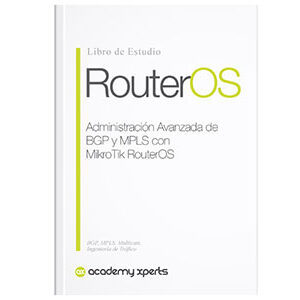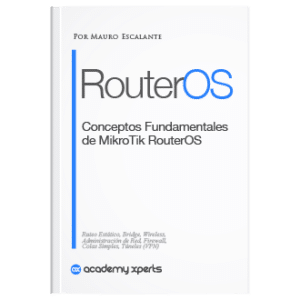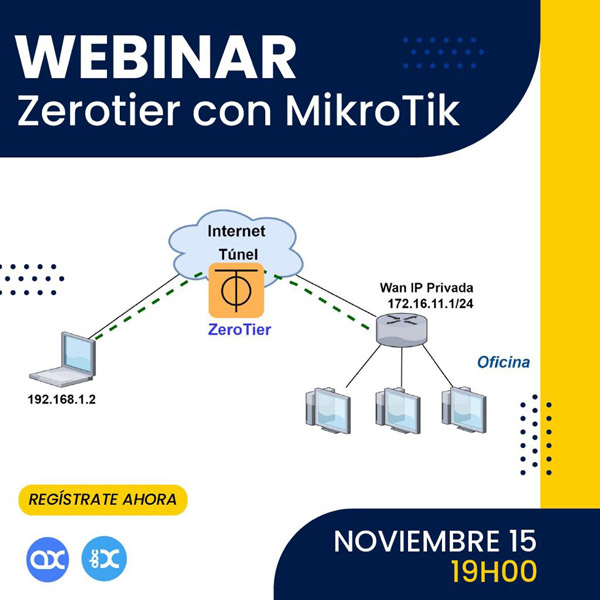Importance of the Fresnel Zone in the implementation of wireless links
- Luis Patricio Cuadrado Tucker
- No comments
- Share this article
In the implementation of wireless links, the Fresnel zone It is an important consideration that affects connection quality and performance. The Fresnel Zone refers to a ellipsoidal region around the direct line of sight between two antennas that are establishing wireless communication.
At the end of the article you will find a small test that will allow you assess the knowledge acquired in this reading
Ellipsoidal Region
Una ellipsoidal region It is a three-dimensional shape that resembles an ellipse in two dimensions. Imagine an ellipse, which is an oval figure with an elongated shape. Now, expand that ellipse in three-dimensional space, as if it were a bubble or a balloon. The resulting shape would be an ellipsoidal region.
This region has one longer main shaft and two shorter secondary shafts. It is important to note that the axes are not necessarily equal in length, meaning that the ellipsoidal region may be wider or more elongated in certain directions.
The Fresnel Zone is a specific ellipsoidal region that helps ensure good signal quality in wireless communication by avoiding obstacles that may interfere with signal propagation.
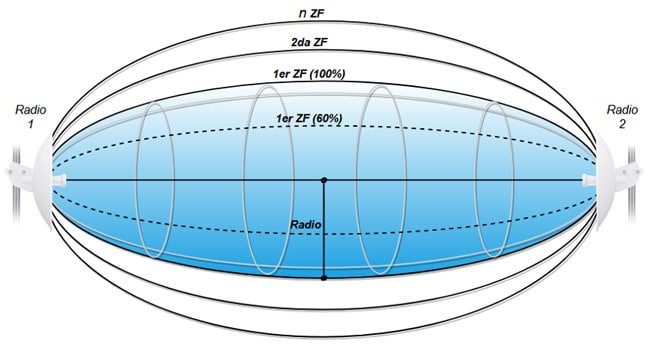
Multipath
When a wireless connection is established between two points, such as a transmitting antenna and a receiving antenna, the electromagnetic signal emitted by the transmitting antenna propagates in a straight line towards the receiving antenna.
However, this direct propagation may encounter obstacles in its path, such as buildings, trees, or uneven terrain.
These obstacles can cause the electromagnetic signal to propagate through multiple paths due to signal reflection, diffraction, and scattering; This phenomenon that can cause interference and degrade the quality of wireless communication is known as multipath.
Areas
The Fresnel Zone is a zone of space that is created around the direct line of sight to counteract the effects of multipath.
This zone is defined by a set of concentric ellipsoids and is divided into two parts: the Upper Fresnel Zone and the Lower Fresnel Zone.
The Upper Fresnel Zone is above the direct line of sight, while the Lower Fresnel Zone is below the line of sight.
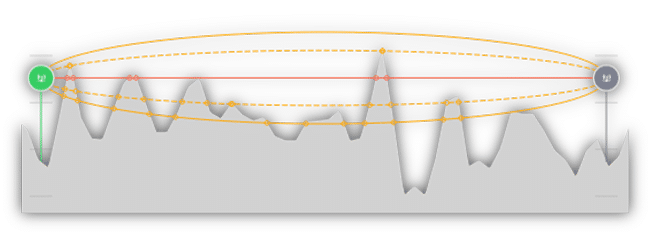
The importance of the Fresnel Zone lies in the fact that it must be kept free of obstacles to ensure good signal quality. If any obstacles interfere with the Fresnel Zone, signal attenuation and possibly transmission errors will occur. The Fresnel Zone narrows as the signal frequency increases and as the distance between the antennas increases.
Determination of the Fresnel Zone
To determine the Fresnel Zone in a wireless link, calculations are made that consider the wavelength of the transmitted signal and the distance between the antennas. Below is a general explanation of how the Fresnel Zone is calculated:
1. Determine the frequency and wavelength
Knows the frequency of the transmitted signal, which is usually provided in the wireless equipment specification. From the frequency, the wavelength can be calculated using the formula:
wavelength (λ) = speed of light (c) / frequency (f)
2. Calculate the radius of the Fresnel Zone
The radius of the Fresnel Zone at a point along the signal path can be calculated using the following formula:
r = (n * λ * d) / D
Where:
- “r” is the radius of the Fresnel Zone at that point.
- “n” is a factor dependent on the type of Fresnel Zone (upper or lower).
- “λ” is the wavelength of the signal.
- “d” is the distance between the antennas.
- “D” is the distance from the point to the receiving antenna (where D = d1 + d2, where d1 is the distance from the point to the transmitting antenna and d2 is the distance from the point to the receiving antenna).
3. Calculate the percentage of the Fresnel Zone free of obstacles
The goal is to ensure that at least 60% of the Fresnel Zone is free of obstacles to minimize signal interference. This can be achieved by calculating the circular area of the Fresnel Zone and checking the obstacle-free area within it. If the obstacle-free area is less than 60%, additional measures must be taken, such as relocating antennas or adjusting the height of towers, to improve connection quality.
It is important to note that, in practice, additional factors such as atmospheric attenuation, the presence of unaccounted for obstacles and other effects can affect signal propagation.
Therefore, it is advisable to perform specific propagation studies and use simulation tools for more precise planning of the Fresnel Zone in a wireless link.
Fresnel Zone calculation examples
Example 1
Suppose we have a wireless link between a transmitting antenna and a receiving antenna, and we want to calculate the radius of the Fresnel Zone at a point along its path. Let's consider the following data:
- Signal frequency: 2.4 GHz (2400 MHz)
- Distance between antennas: 1 km (1000 meters)
- Distance from point to receiving antenna: 500 meters
Step 1: Calculate the wavelength.
The wavelength can be obtained using the formula:
wavelength (λ) = speed of light (c) / frequency (f)
The speed of light is approximately 3 x 10^8 meters per second.
λ = (3 x 10^8 m/s) / (2400 x 10^6 Hz) ≈ 0.125 meters ≈ 12.5 cm
Step 2: Calculate the radius of the Fresnel Zone.
Using the formula:
r = (n * λ * d) / D.
Suppose we want to calculate the radius of the upper Fresnel Zone (n = 1). In this case, D = d1 + d2 = 500 meters (distance to the receiving antenna).
r = (1 * 0.125 m * 1000 m) / 500 m ≈ 0.25 meters ≈ 25 cm
Therefore, the radius of the upper Fresnel Zone at that link point is approximately 0.25 meters or 25 cm.
Example 2
Suppose we have a wireless link between a transmitting antenna and a receiving antenna, and we want to calculate the radius of the Fresnel Zone at a point along its path, taking into account the unevenness of the terrain on the side of the receiving antenna. Let's consider the following data:
- Signal frequency: 5 GHz (5000 MHz)
- Distance between antennas: 2 km (2000 meters)
- Distance from point to receiving antenna: 500 meters
- Terrain slope on the side of the receiving antenna: 20 meters
Step 1: Calculate the wavelength.
Using the formula:
wavelength (λ) = speed of light (c) / frequency (f)
The speed of light is approximately 3 x 10^8 meters per second.
λ = (3 x 10^8 m/s) / (5000 x 10^6 Hz) ≈ 0.06 meters ≈ 6 cm
Step 2: Calculate the radius of the Fresnel Zone.
Using the formula:
r = (n * λ * d) / D.
Suppose we want to calculate the radius of the upper Fresnel Zone (n = 1). In this case, D = d1 + d2 + √(h1 * h2), where h1 is the slope of the terrain on the side of the transmitting antenna and h2 is the slope of the terrain on the side of the receiving antenna.
D = 2000 m + 500 m + √(0 * 20 m) ≈ 2500 m
r = (1 * 0.06 m * 2000 m) / 2500 m ≈ 0.048 meters ≈ 4.8 cm
Therefore, the radius of the upper Fresnel Zone at that point of the link, considering the unevenness of the terrain, is approximately 0.048 meters or 4.8 cm.
These are simplified examples and calculations may vary depending on link details such as frequency used, distances, terrain differences, and other factors.
To obtain more accurate results, it is advisable to use simulation tools or software specialized in planning wireless links that take into account the unevenness of the terrain.
Summary
In the implementation of wireless links, the Fresnel Zone is an ellipsoidal region around the direct line of sight between two antennas establishing wireless communication. This area helps counteract the effects of multipath, which occurs when the signal is reflected, diffracted or scattered due to obstacles in its path.
The Fresnel Zone is divided into an upper part and a lower part. It is crucial to keep this area free of obstacles to ensure good signal quality. If any obstacles interfere with the Fresnel Zone, signal attenuation and possible transmission errors occur.
The size of the Fresnel Zone is determined by calculations based on the wavelength of the transmitted signal and the distance between the antennas. It is intended that at least 60% of the Fresnel Zone be free of obstacles to avoid significant signal degradation.
The Fresnel Zone is important in dense urban environments or long-distance wireless links, where obstacles are more likely to be encountered. To ensure a reliable connection, techniques such as proper selection of antenna locations, adjustment of tower heights, and use of simulation tools are used to plan and optimize the Fresnel Zone in the implementation of wireless links.
Brief knowledge quiz
What do you think of this article?
Do you dare to evaluate your learned knowledge?
Recommended book for this article
Related Posts
- Wi-Fi 6 (802.11ax): The Future of Wireless Connectivity
- Wireless Measurements: A Fundamental Pillar for Efficient Networks
- Digital Modulations: How They Work and Why They Are Important
- Importance of Free Space Path Loss in the design and planning of radio links
- WiFi Channel Bonding: Increase the Bandwidth of your Wireless Network
Related Posts
- Wi-Fi 6 (802.11ax): The Future of Wireless Connectivity
- Wireless Measurements: A Fundamental Pillar for Efficient Networks
- Digital Modulations: How They Work and Why They Are Important
- Importance of Free Space Path Loss in the design and planning of radio links
- WiFi Channel Bonding: Increase the Bandwidth of your Wireless Network







